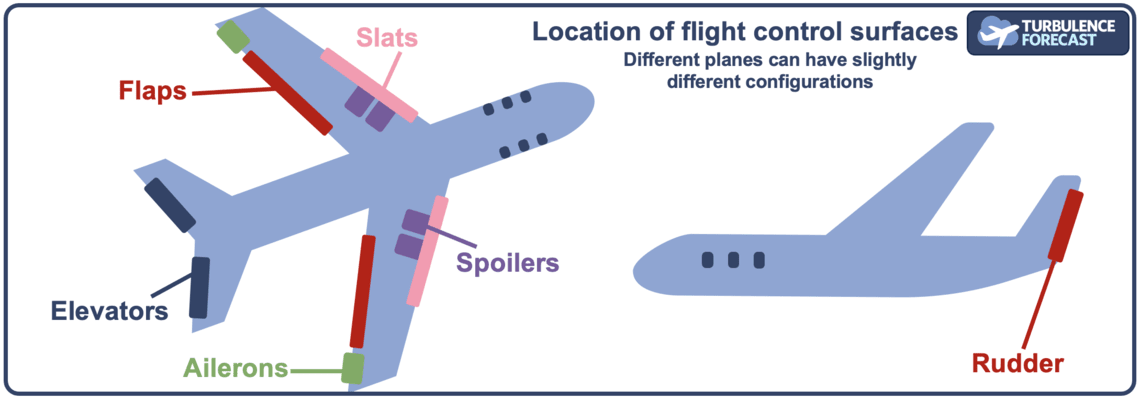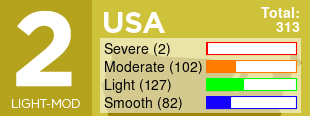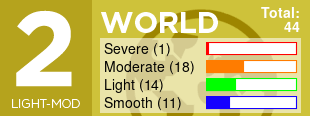Are you an Android developer and love the site? Contact us
updated (Apr 14, 2024)

(c) Turbulence Forecast 2023
What are the different flight control surfaces?
Published December 20, 2023
Each airplane, small or large, is equipped with a series of external flight controls that enable pilots and autopilots to maneuver the aircraft, from takeoff to landing. These controls are essential for controlling the aircraft's attitude, altitude, and direction, and to counteract forces that act on the plane, such as winds or turbulent air. Let's explore the primary and secondary flight controls and how they work. We’ll describe the activation of those controls as it would be performed manually by the pilot; however, in most modern passenger planes, a lot of these functions happen via autopilot and programmed flight paths. The pilot can always disengage the autopilot and take control if needed.
Primary flight controls:
- The main ailerons are located on the outer rear edge of each wing. They control the roll of the aircraft, allowing it to bank left or right. When the pilot moves the control yoke or stick to the left or right, the ailerons on one wing move up while those on the other wing move down. This differential movement creates more lift on one side, causing the aircraft to roll in the desired direction.
- The elevators are located on the horizontal tail surface of the plane. They controls the pitch of the aircraft, allowing it to climb or descend. When the pilot pulls back on the control yoke or stick, the elevators deflects upward, causing the nose of the aircraft to pitch up. Conversely, pushing the control yoke or stick forward deflects the elevators downward, pitching the nose down.
- The rudder is located on the vertical tail surface at the rear of the plane. It controls the yaw of the aircraft, allowing it to turn left or right. When the pilot pushes on the rudder pedals, the rudder deflects left or right. This differential movement creates a side force that causes the aircraft to yaw in the desired direction.
Secondary flight controls:
- Flaps are cocmmonly found on the trailing edge of each wing, near the fuselage. They are used to increase lift during takeoff and landing and to provide better control at lower speeds. The pilot can deploy or retract flaps as needed. When extended, flaps increase the wing's surface area, allowing the aircraft to generate more lift at slower speeds.
- Slats are positioned on the leading edge of the wings, near the fuselage. Similar to flaps, slats help increase lift during takeoff and landing. They’re movable surfaces that can be extended to create a slot between the slat and the wing. This slot helps maintain smooth airflow over the wing at higher angles of attack, and thus enhances lift.
- Spoilers are often located on the upper surface of the wings. They disrupt the airflow over the wings, reducing lift and facilitating controlled descent. The pilot can deploy spoilers symmetrically on both wings to decrease lift and initiate a controlled descent. Spoilers are commonly used during the descent and landing phases. Different planes have more or fewer spoilers in locations along the wings.
If you’re seated in a window seat, you will be able to observe many of these controls in flight. The only ones you can’t see are the elevator and the rudder on the tail. Next time you’re flying, try to identify which of these surfaces are activated, and their effect on the plane.


